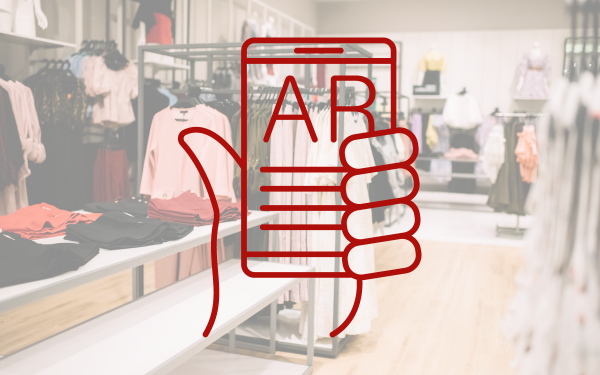Augmented Reality. AR. That merging of the real and the digital worlds that happens when you point a mobile phone camera at an object and an app magically superimposes 3D images onto the field of view.
Great for engaging kids in educational content when all of a sudden they can see a dinosaur or a giant sea creature or a long-dead historical figure appear before their eyes. Great for video games where you can wow players by blurring the lines between the game world and reality.
But AR in retail? Is it ever anything more than a shiny bauble to grab shoppers’ attention? Or does it have genuine potential to improve the retail experience?
Statistics suggest that a majority of consumers think the latter. 61% of shoppers say they prefer to shop with retailers that offer AR-driven experiences, and 71% say they would shop more often if AR was available. And yet there seems to be a significant gulf between consumers’ thoughts and where retailers are on this. It is estimated that just 1% of retailers have introduced AR to date.
Perhaps it’s a case of AR needing to shake off its ‘gimmicky’ reputation among retailers. Here’s why it can be so much more than that.
AR is another way of delivering mobile-first shopping experiences – even in store
Shopping is a mobile-first experience these days. Even when people aren’t actually making purchases directly on their smartphones, they are looking up products, comparing prices, reading reviews and more. Even when shopping at a brick-and-mortar store, 84% of people admit to using their phones to compare prices, look up product information and more besides.
AR is a way of tapping into this trend for using smartphones in store in a way that enhances the experience. Instead of people having to browse other sites, with an AR-enabled app, you can let customers point their phone straight at a product and bring up product details right there on screen, view alternative designs and colours, and much more.
AR for inspiration and personalisation
Augmented Reality literally means ‘adding to’ the experience of the real world with additional digital input. One of the reasons people still like to shop in store is because it gives them a chance to see a product up close, or even ‘try before they buy’. AR can add to these experiences in various ways.
For example, going to a furniture store might allow you to sit on a sofa to see how comfy it feels. But what about how it will look in your front room? Companies such as Ikea and DFS offer AR tools that superimpose furniture into an image of a space, and to scale. This kind of virtualisation technique can be used across all sorts of verticals, from ‘virtual make-overs’ that let you try out cosmetics to paint mix visualisers for home decor.
Even in fashion and apparel, where trying items for size before you buy is most common, AR can add to the experience. So-called ‘magic mirror’ screens show how clothes would look on you without the hassle of waiting for a changing room and getting undressed. But AR can also be used to add personalisation and customisation into the try-out experience, such as making suggestions for the right size and fit, or instantly showing different colour combinations that might not be available in stock.




